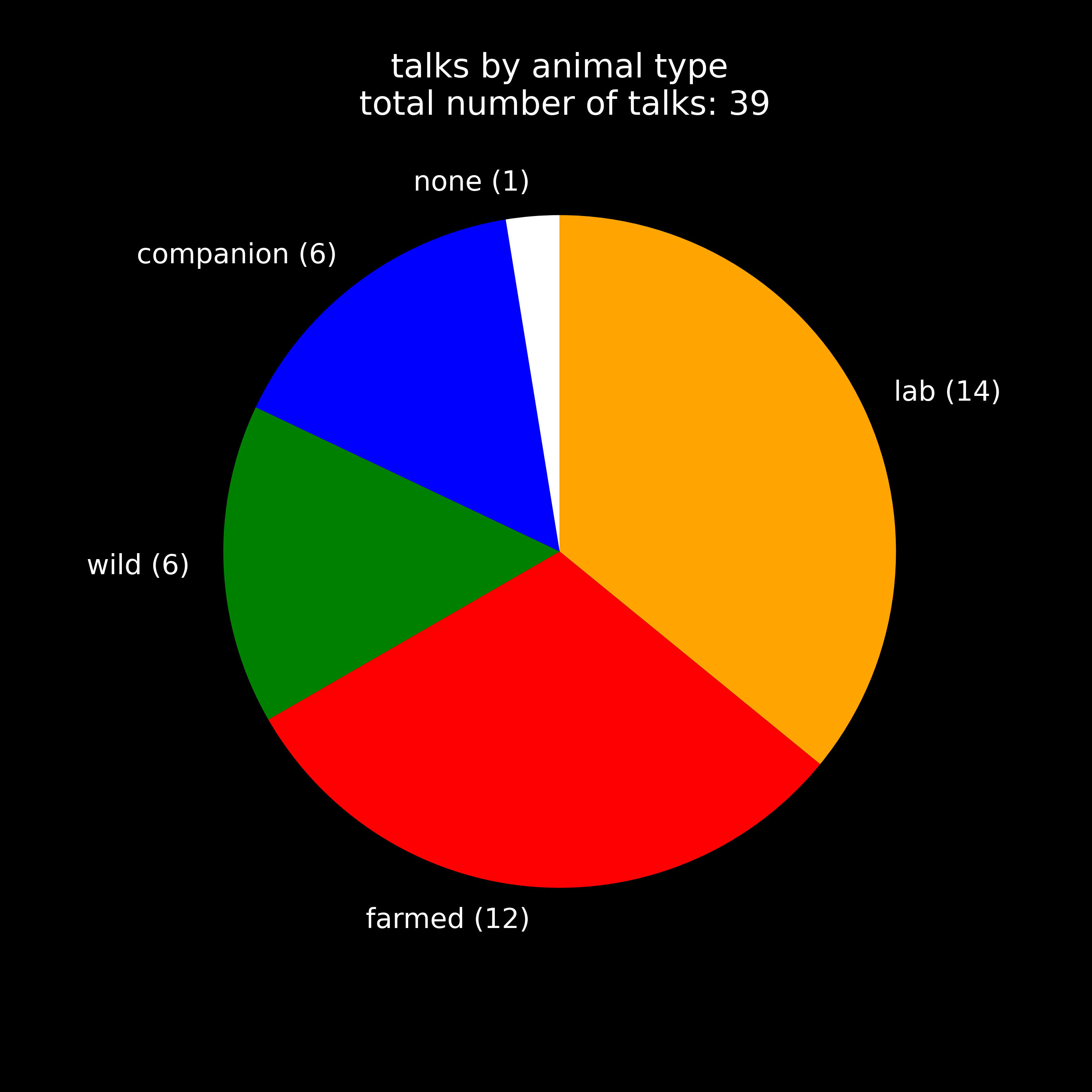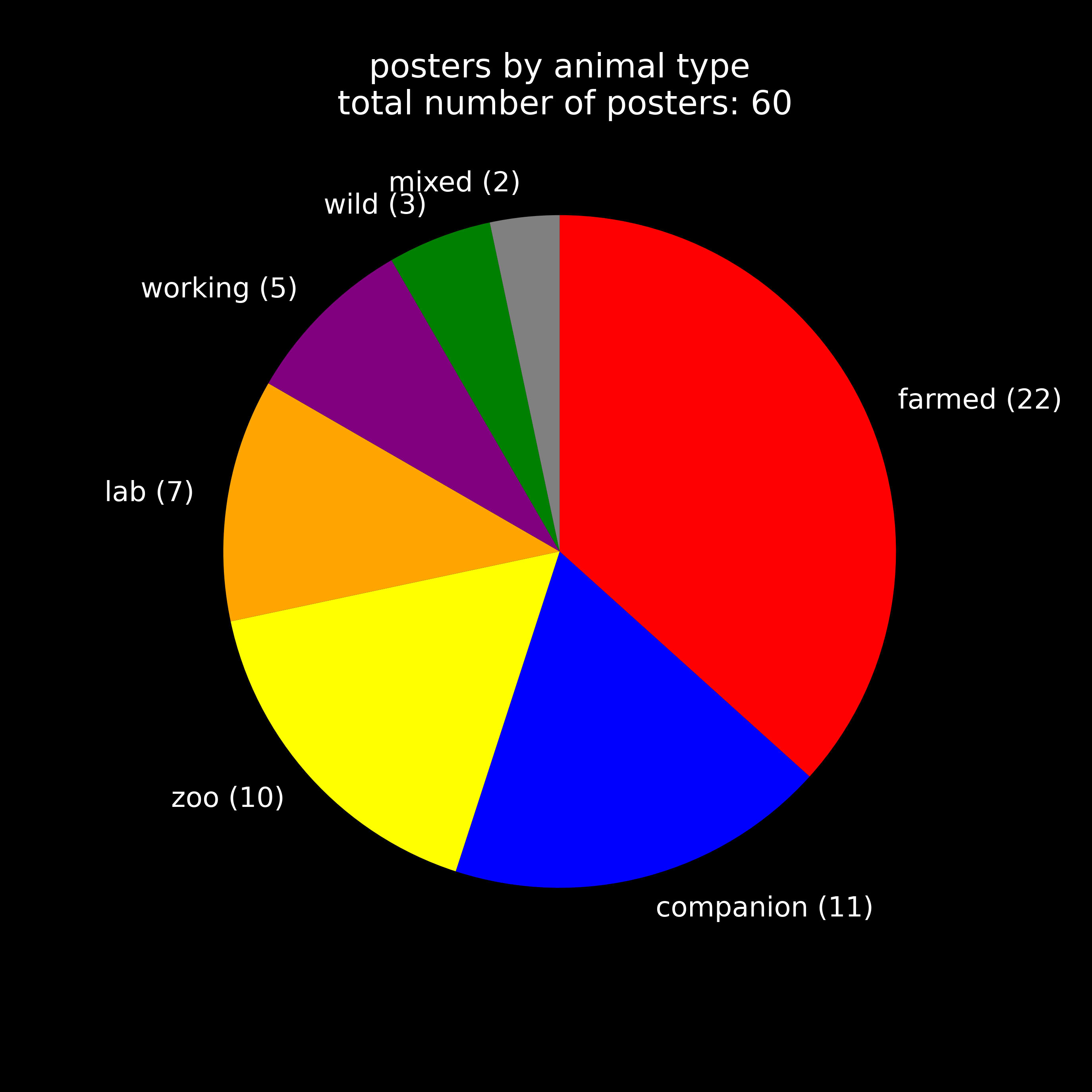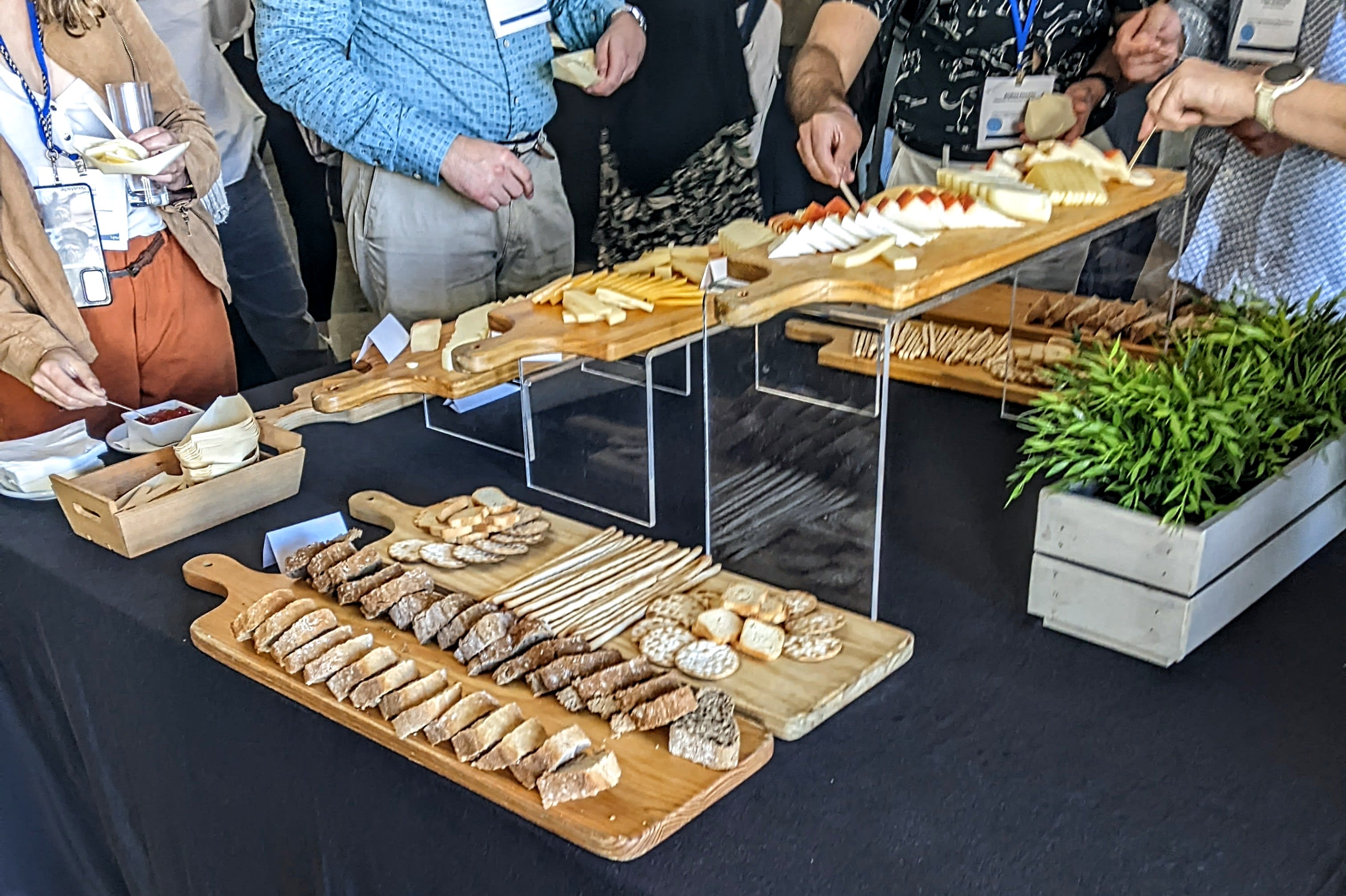animal welfare outside of EA—numbers and thoughts on UFAW 2024
Last week I attended the UFAW International Animal Welfare Conference 2024 in Porto. Here are some facts about the conference and its content as well as some personal impressions. I hope this gives some insights into animal welfare work outside of EA. Of course, this is just one conference, though.
I am not affiliated with UFAW and did not present any work at the conference.
TLDR
The UFAW International Animal Welfare Conference 2024 was an academic two-day event with talks and posters
most content was on farmed animals and lab animals
there was some representation of wild animals, especially among the talks, including the keynote
companion animals, working animals and animals in zoos/sanctuaries/rehabilitation centres together also made up a large part of the programme, mostly in the form of posters
my personal impressions include
most people attending were not vegetarian or vegan
general enthusiasm about helping animals seemed low
wild animal welfare is fringe, especially when considering non-anthropogenic harms
about UFAW and the conference
The Universities Federation for Animal Welfare (UFAW) is an animal welfare charity that focuses on supporting the science of animal welfare. They organise academic events, run the journal “Animal Welfare” and give grants and awards to researchers in the field.
The UFAW International Animal Welfare Conference 2024 was a two-day conference with programme scheduled from 9 am until 6 pm both days (10/11 July 2024). There were two types of content: talks and posters.
representation of different animal groups in the conference content
overview
I made pie charts to see how farmed, lab, wild, companion and other animals were represented in the programme.
Here is the pie chart for talks:

And here is the same for posters:

For the data behind these plots, including notes on potentially controversial classifications, see this GitHub repo.
wild animals
I was firstly pleasantly surprised by the fact that there were a number of talks on wild animals in the programme. They made up 15% of talks. Wild animal welfare was even the topic of the keynote at the very start of the conference (“What is wild animal welfare like and why should we care about it?” by Clare Palmer).
There were two talks on fertility control. One was a theoretical one on explicitly optimising total welfare by reducing population size, presented by Simon Eckerström Liedholm from the Wild Animal Initiative. The other one was by researchers from the Animal and Plant Health Agency in York and focused on using fertility control to replace rodenticide.
There was one talk on feral animals, presented by Peter Sandøe. In the talk Peter explicitly considers feral animals to be separate from wild animals, but I included them in this statistic.
Another talk was about “striking a balance between Iberian Lynx conservation efforts and animal welfare”. The talk considers the welfare of the lynxes during captivity and reintroduction and the welfare of the rabbits used for food in captivity. However, it did not touch on the welfare of released lynxes or the welfare of any prey that the lynxes may hunt after release into the wild. Although the latter was pointed out by someone in the audience during questions after the talk.
Finally, Michael Beaulieu from the Wild Animal Initiative gave a talk on using biologgers to study wild animal welfare.
farmed animals
30% of talks and 37% of posters were on farmed animals. Topics included
measuring welfare (corticosterone, vocalisations...)
improving welfare (enrichments, outdoor access...)
attitudes of producers
attitudes of the public
policy/law
There was a small number of talks and posters that mentioned shrimp.
lab animals
36% of talks and 12% of posters were about lab animals. If you are reading this, you probably know that the number of lab animals is insignificant when compared to the number of farmed animals. However, clearly, lab animals are studied a lot, especially by researchers who use them.
companion/working animals and animals in zoos
I was surprised that companion and working animals were a common topic at this conference (15% of talks and 27% of posters) . I personally would have expected it to be difficult to find funding to do research on them, even though they are obviously very visible and adored by much of the public.
Another 17% of posters were on various animals in zoos, rehabilitation centres and sanctuaries.
visible EA-related presence
EA-related presence I spotted:
4 people from Wild Animal Initiative with 2 talks and 2 posters
Rethink Priorities had 1 person giving a talk on shrimp welfare
80k was apparently mentioned on the second day during a career workshop—I did not attend this and only heard about it from someone else who was there
personal experience of the “vibe”
food
I found it surprising that the catering included lots of cheese and quite a bit of meat. I sometimes struggled to find vegan options (and I even spotted some non-vegan things marked as vegan). Most people I talked to did not really care about that and some people commented negatively on vegan options.

At the end of the first day, we were served a four-tier cheese board with one vegan option. When I said something like “Oh, they have a vegan one!”, someone responded with “Thanks for the warning!” and proceeded to load up on the other cheeses. This person has done lots of research on pain in animals.
I did not expect the majority of attendees to be vegan or vegetarian. But I was still somewhat surprised by the attitudes most people had towards animal products and alternatives.
general enthusiasm
I did not find many people who were really excited about understanding/improving animal welfare. This might have been somewhat caused by the format of the conference, though.
All talks happened sequentially in one room with breaks only every 1.5h or so. It was not really possible to just pop in and out for the talks that one was interested in. I think this resulted in everyone being quite tired most of the time.
There was also very limited time for questions and people were repeatedly told to keep questions and answers brief. This meant that there wasn’t much discussion happening outside of breaks.
attitudes towards wild animal welfare
As mentioned above, wild animal welfare was the topic of multiple talks, including the keynote.
I tried to talk to lots of different attendees during the breaks. A lot of people rejected ideas of intervening in “nature” and claimed that suffering in the wild is “natural”. One person I talked to suggested that extreme hunger in the wild is good because of the extreme joy the animal feels once it eventually finds food. And because we can never measure that joy, we have no right to take away the hunger.
At the start of the second day, there was an informal meetup on wild animal welfare just before the conference. It was attended by four people from WAI, two philosophers (both had previously published on the subject) and me. It was at 8 am and not on the official schedule, so this is not a great indicator of interest. However, I would have expected more attendees, especially given that there were multiple talks on wild animals.
potentially interesting future work
Here are some pieces of analysis that I thought could be interesting but did not do:
grouping content by “discipline” (philosophy, biology, law...)
grouping content by “topic” (measuring welfare, studying interventions...) - I am unsure about what good categories would be
sub-grouping content on farmed animals by species (cows, pigs, chickens...)
doing all of this for previous UFAW conferences and plot some trends—the UFAW events archive goes back to 2009
doing the same for other events and or journals in the space
I might pick this up again someday, but it’s not very likely. If you have time on your hands, doing these things might lead to some interesting insights.
references
GitHub repo which includes the data and code I used to make the plots (doi: 10.5281/zenodo.12789280)
conference programme book (archived 2024-07-04)
This is pretty sad and also surprising. In your opinion, why are there so many people that come to an animal welfare conference but are not really interested in helping animals (apparently)? If they don’t care about animals, what are they doing there?
It doesn’t feel particularly different from other academic conferences to me. Most researchers don’t reflect on what they think the most important research is and then go out and find the funding and institution to do exactly that. Instead, you usually apply to lots of PhD/postdoc positions that are vaguely in your field of expertise and you take what you get. Such positions often come with funding for some particular kind of work. I am not surprised that there is money in research on precision livestock farming, for example. I expect this is a bit different once you get tenure, but most research is done by early-career researchers (because there are so much more of them).
I assume the people there like animals a bit more than the average person. They probably chose their undergrad (veterinary science/biology/...) because of that. Then, at the end of their undergrad they would have chosen their final project from a limited list of possible projects offered by a limited number of labs (at a uni that they picked years previously for probably different reasons). And then, when they were applying to PhDs, they likely prioritised projects that were somewhat related to that undergrad project. Sadly, a lot of researchers stumble into their speciality like that.
(This is my personal impression of how academia works. I am not aware of any proper research on this.)
Even amongst academic conferences, this seems quite outside of my personal experience. I’ve been to a small number of academic animal law conferences and—while there is plenty to complain about from an EA perspective—most people were there because they cared about animals and the food was all vegan.
Thanks for sharing your experience! Maybe this was unusual for animal related events.
My experience with academic conferences comes mostly from non-related computer science conferences.